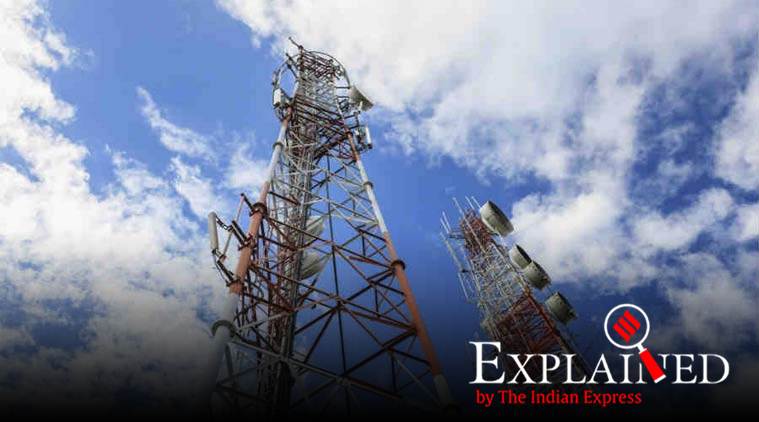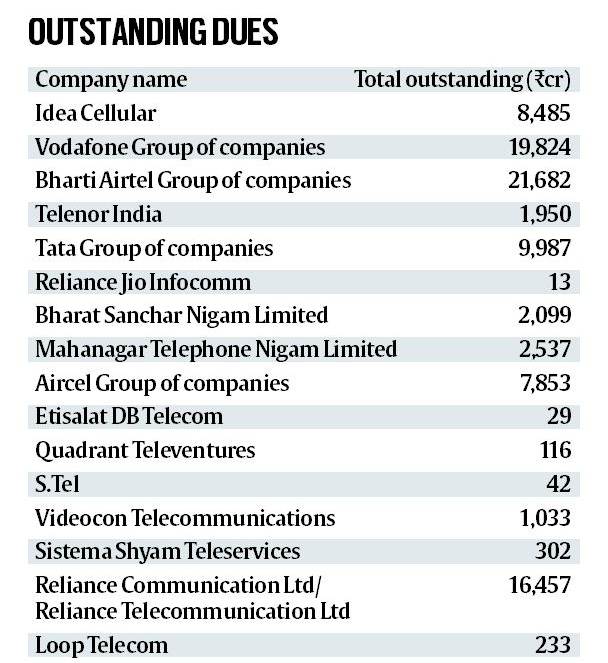DoT’s hope for 2020: Good bidding for 5G spectrum; telcos likely to disagree
Bharti Airtel, with a net debt of Rs 1,082 billion, and Vodafone Idea with net debt of Rs 1,185 billion as on March 31, 2019, are unlikely to spend money for acquiring 5G spectrum.
 The DoT has planned another telecom auction of 8,300 MHz spectrum, including in the 5G band next calendar year. (File)
The DoT has planned another telecom auction of 8,300 MHz spectrum, including in the 5G band next calendar year. (File)
In 2016-17, when the Department of Telecommunications (DoT) conducted the last telecom spectrum auction, it managed to raise roughly Rs 65,000 crore, just a tenth of its Rs 5.63 lakh crore base price target. The auction was conducted one year after the launch of mobile telephony services by Mukesh Ambani-led Reliance Jio Infocomm. Incumbents Bharti Airtel, Vodafone, and Idea Cellular were then in a price war with Reliance Jio, and had little to splurge.
The total spectrum up for auction in FY17 was nearly 2,355 megahertz (MHz), of which the government managed to sell 965 MHz across seven bands. Having burnt its fingers, the government did not auction any spectrum in FY18 and FY19.
The DoT has planned another telecom auction of 8,300 MHz spectrum, including in the 5G band next calendar year. Bharti Airtel, with a net debt of Rs 1,082 billion, and Vodafone Idea with net debt of Rs 1,185 billion as on March 31, 2019, is unlikely to spend money to acquire 5G spectrum.
The DoT, however, has pinned its hopes on the expansion of services by telecom companies, and burgeoning consumer demand. Telecom Secretary Anshu Prakash had, while announcing the latest telecom spectrum, said the government was hopeful of getting good bids as “telecom operators do require spectrum”.
Other senior DoT officials concur. To further their claims that the prices are not too high, they offered back-of-the-envelope calculations, according to which telecom companies will have to shell out only Rs 9,000 crore upfront to purchase the 5G band.
“Of Rs 5.22 lakh crore, only 35 per cent, or about Rs 1.65 lakh crore, is for 5G. Let’s say they take 75 MHz, they will have to spend only about Rs 36,000 crore. The upfront payment is only about 25 per cent, or Rs 9,000 crore”, senior DoT officials explained.
 *TSPs wise Provisional License Fee outstanding demand up to July 2019.
*TSPs wise Provisional License Fee outstanding demand up to July 2019.
Further, even for this Rs 9,000 crore, the payment is staggered. There is a two-year initial moratorium, followed by payment over 16 years, the officials said.
Most of the action, as far as the telecom auctions are concerned, is on paper for now. The ground reality is that everyone, including the DoT, is in a wait-and-watch mode.
Telecom auctions apart, the next year could also see some finality with respect to the merger of state-owned Bharat Sanchar Nigam Limited (BSNL) and Mahanagar Telephone Nigam Limited (MTNL), and their subsequent revival.
While the Finance Ministry was of the view that the two companies should be sold lock, stock, and barrel, it was on the intervention of senior ministers, including Home Minister Amit Shah, that the plan to resuscitate the BSNL-MTNL combine was approved.
“The Finance Ministry was adamant. We had to intervene and convince (Shah) that in a situation where the two bigger private players (Bharti Airtel and Vodafone Idea) other than them (Reliance Jio) were already struggling, it would send out the wrong message,” top government officials said.
What 2020 holds?
In October this year, the Supreme Court’s judgment on AGR saddled Bharti Airtel and Vodafone Idea with the obligation to deposit Rs 43,000 crore and Rs 54,000 crore, respectively, by January 23. These amounts have to be paid by the telcos to the DoT to avoid a contempt of court.
The two incumbents — Bharti Airtel and Vodafone Idea — are learnt to have approached the DoT for relief. While the government declined to waive off the penalty amount, a two-pronged relief package was suggested: A staggered payment schedule of the AGR dues and an indication that any move by the incumbents to hike tariffs would be ‘facilitated’ on an industry-wide basis. Sure enough, all three major telecom players hiked their tariffs in November.
It could provide Bharti Airtel and Vodafone Idea with a possible opportunity to repair their finances and become sustainable, analysts said. Estimates by analysts and rating agencies suggest that as operating cash flows improve, telcos will be in a better position to arrange funding for AGR-related payouts that they have to make. They could see stabilisation of their user base as Reliance Jio has also started charging users across all its services.
The story of lack of financial freedom of the telecom sector, however, did not write itself overnight. It has been in the making for some time now, triggered by the cancellation of 122 telecom licenses by the Supreme Court seven years ago.
The downfall
In February 2012, the apex court cancelled all the 122 unified access service licenses issued in January 2008. An investment of nearly Rs 40,000 crore, made majorly by Uninor and Sistema went down the drain. Other than these two, the telecom licenses obtained by S Tel, Videocon, Idea Cellular, Tata Teleservices, Loop Telecom, and Etisalat DB also were cancelled. For incumbent players such as Bharti Airtel and Vodafone, the judgment was a bonanza. Bharti Airtel had, on the day of judgment, gained as much as 7 per cent on the BSE. Apart from the obvious gain in the subscriber base, the fringe benefit was more spectrum for these players.
The launch of Jio
For two years thence, Bharti Airtel, Vodafone, and Idea Cellular reigned supreme. The unchallenged run of the incumbents, however, was hit by the Reliance Jio, which had deep pockets and offered free services for the longest time. The first casualty for Bharti Airtel and Vodafone Idea, was the fall in Average Revenue Per User (ARPU).
Bharti Airtel, which had an ARPU of Rs 150.88 in the January-March quarter in 2015, reported revenue at Rs 121.81 in the corresponding quarter two years later. Similarly, Vodafone, which then functioned as a standalone company, reported an ARPU of Rs 143.98 between January and March 2015, and Rs 116.95 in the corresponding quarter two years later.
To sustain themselves, the incumbents had to keep cutting prices to survive the freebies being offered by Reliance Jio. It left Bharti Airtel and the present combined entity of Vodafone Idea with little to spend other than on basic necessities.
The AGR shock
Barely had Bharti Airtel and Vodafone Idea managed to come out of the woods, the Supreme Court handed them more trouble. In its judgment upholding the definition of AGR as set by the government, the apex court said that not only should the telcos pay the over-due AGR, but they should also pay interest and penalties.
The contention over AGR is not new though. Following the roll-out of the New Telecom Policy in 1999, the government suggested that telcos could migrate from the regime of “fixed-licence fee” to a “revenue-sharing model. Against the recommendations of Trai, the DoT had then decided to include the income of telcos, their interest income on short-term investments, discounts on calls, revenues from other activities separately licensed, and the reimbursements under the Universal Service Fund under AGR. Though challenged, the apex court ultimately upheld this definition.
The telcos have filed review petitions in the apex court. Any immediate relief, however, is unlikely. The AGR petitions were heard by a three-judge Bench, and thus a review of the judgment, if allowed, will have to be done by a five-judge Bench.
- 01
- 02
- 03
- 04
- 05






































